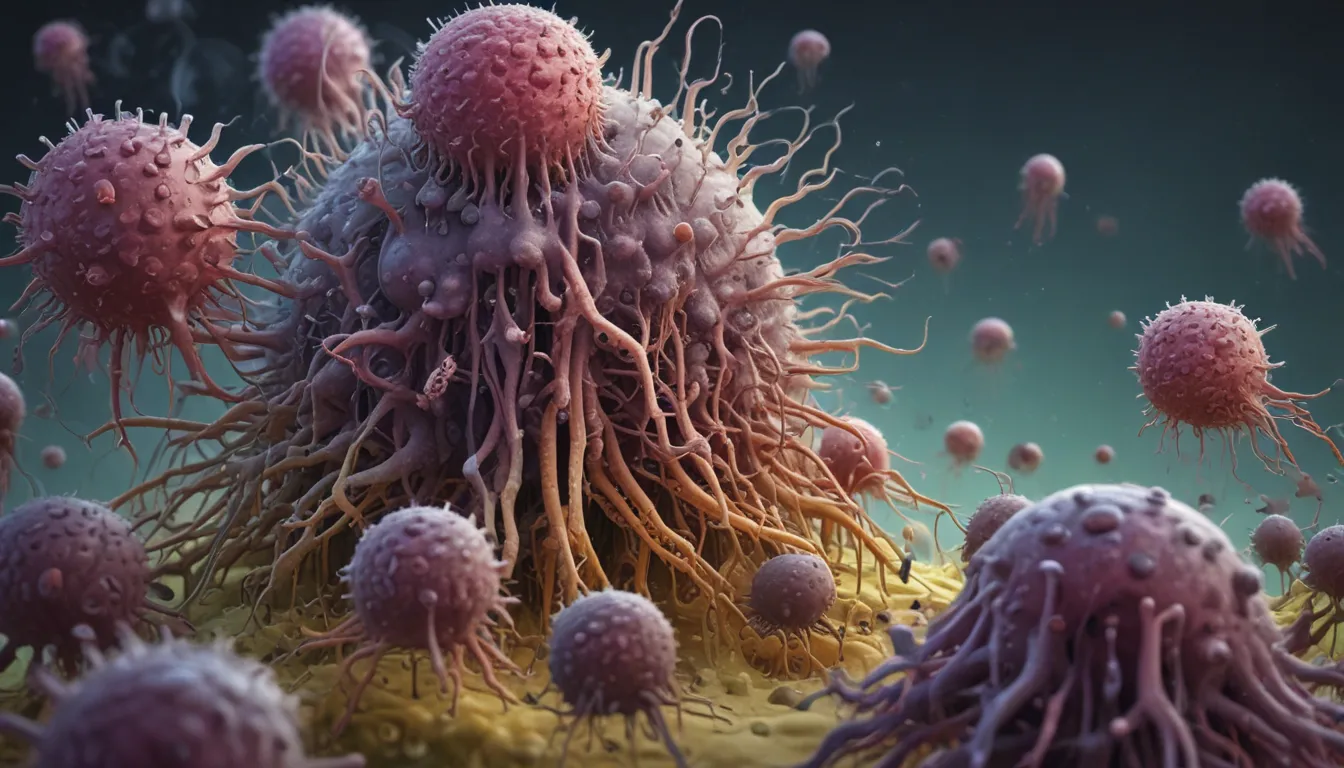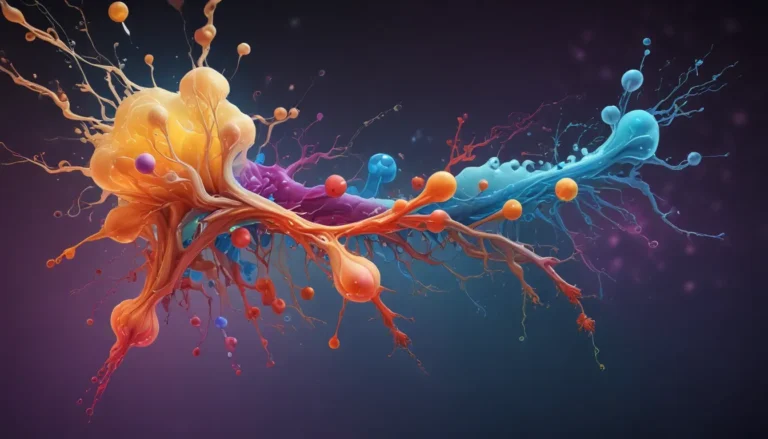A Note About Images: The images used in our articles are for illustration purposes only and may not exactly match the content. They are meant to engage readers, but the text should be relied upon for accurate information.
Pathogens, the microscopic organisms that pose a threat to humans, animals, and plants, are pervasive in our world. Understanding the nature and behavior of these infectious agents is paramount for preventing and treating diseases. While we may be familiar with some common pathogens like bacteria and viruses, there are many lesser-known facts about these intriguing organisms that are worth exploring. In this article, we will delve into 16 surprising facts about pathogens that will expand your knowledge and appreciation for the intricate world of infectious diseases. From their astonishing adaptability to their symbiotic relationships with hosts, prepare to be amazed by the fascinating realm of pathogens.
Key Insights:
- Pathogens are ubiquitous, exhibit rapid mutation, and can even offer benefits. Knowledge about them aids in disease prevention and control.
- Pathogens have played a significant role in human history and can be managed through vaccination. Understanding them empowers us to safeguard ourselves and others.
Pathogens: Everywhere and Anywhere
Pathogens can be found in diverse environments, from the kitchen countertop to the depths of the ocean. They exhibit an astonishing ability to survive in extreme conditions, including high temperatures, acidic environments, and even outer space.
The Diverse Modes of Pathogen Transmission
Pathogens can spread through various means, such as direct contact, contaminated food and water, airborne particles, insect bites, and sexual contact. Understanding their transmission modes is vital for developing effective prevention and control strategies.
The Rapid Mutation of Pathogens
Pathogens possess the remarkable capacity to mutate and adapt to their surroundings. This evolutionary trait allows them to develop resistance to antibiotics and vaccines, posing challenges for medical professionals in combating certain infections.
The Surprising Benefits of Some Pathogens
While pathogens are commonly associated with causing diseases, not all of them are harmful. Some beneficial bacteria, referred to as probiotics, contribute to maintaining a healthy gut microbiome and enhancing digestion.
Pathogens’ Impact on Plants
Beyond affecting humans and animals, pathogens can also wreak havoc on plants. Plant pathogens can lead to significant crop losses, impacting food security and economic stability.
Pathogens’ Survival on Surfaces
Pathogens can survive on various surfaces, such as doorknobs and countertops, for extended periods. Regular cleaning and disinfection practices play a vital role in preventing the spread of infectious diseases.
Pathogens’ Evasion of the Immune System
Certain pathogens have developed sophisticated mechanisms to evade or suppress the host’s immune system. This ability enables them to establish chronic infections and persist within the body.
Pathogens and Pandemics
Throughout history, pathogens have been responsible for devastating pandemics that have claimed millions of lives. Examples include the Black Death in the 14th century and the recent COVID-19 pandemic.
The Classification of Pathogens
Pathogens can be categorized into groups such as bacteria, viruses, fungi, and parasites, each with unique characteristics and infection mechanisms.
Pathogens’ Dynamic Virulence
Virulence, referring to a pathogen’s severity in causing disease, can be modulated by certain pathogens based on environmental cues. This ability allows them to strike a delicate balance between replication and host survival.
Pathogens’ Horizontal Gene Transfer
Pathogens can acquire new genes from unrelated species through horizontal gene transfer, contributing to their evolution and adaptation.
Pathogens’ Manipulation of Host Behavior
Some pathogens can alter the behavior of their host organisms to increase their chances of transmission. For instance, the Toxoplasma gondii parasite can manipulate the behavior of rodents, reducing their fear of predators.
Pathogens’ Transmission from Animals to Humans
Zoonotic diseases, such as rabies, Ebola, and avian influenza, can be transmitted from animals to humans.
The Role of Vaccination in Controlling Pathogens
Vaccination is crucial in preventing and controlling the spread of infectious diseases by stimulating the immune system to recognize and destroy pathogens, providing long-term protection.
Pathogens’ Genetic Recombination
Genetic recombination occurs when different strains of a pathogen exchange genetic material, leading to the emergence of new strains with unique characteristics and increased virulence.
Pathogens Shaping Human History
Throughout history, pathogens have significantly influenced societies and major events, leaving a lasting impact on our collective story.
These 16 intriguing facts about pathogens highlight the incredible diversity and adaptability of these microscopic organisms. By gaining insight into their characteristics and behaviors, we can better equip ourselves to combat and prevent the spread of infectious diseases.
Concluding Thoughts
Pathogens are complex and fascinating entities that play a pivotal role in biology. Understanding their characteristics, behaviors, and impact on human health is essential in developing effective strategies against infectious diseases. From their evolutionary prowess to their contributions to immune responses, pathogens continue to be a subject of research and study. Exploring these surprising facts about pathogens deepens our comprehension of their mechanisms and paves the way for improved health outcomes worldwide.
FAQs on Pathogens
Q: What are pathogens?
A: Pathogens are organisms, including viruses, bacteria, fungi, and parasites, that can cause disease in their hosts.
Q: How do pathogens spread?
A: Pathogens spread through various routes, such as direct contact with infected individuals, contaminated food or water, respiratory droplets, and vectors like mosquitoes or ticks.
Q: How do pathogens evolve?
A: Pathogens evolve through genetic mutations and natural selection, enabling them to adapt, develop resistance, and evade the immune system.
Q: What are examples of common pathogens?
A: Common pathogens include influenza virus, Staphylococcus aureus bacteria, Candida albicans fungus, and Plasmodium parasite (causing malaria).
Q: Can all pathogens cause disease?
A: Not all pathogens cause disease in every host, as some individuals may have immunity through vaccination or prior exposure.
Q: How can we prevent the spread of pathogens?
A: Preventive measures include good hygiene practices, vaccination, safe food handling, sanitation, and avoiding close contact with infected individuals.
Q: Are all pathogens harmful?
A: Not all pathogens are harmful, as some bacteria play beneficial roles in digestion and immune system maintenance.
Q: What is the role of antibiotics in treating infections caused by pathogens?
A: Antibiotics can kill or inhibit bacterial growth but are ineffective against viruses or fungi.
Q: Can pathogens become resistant to antibiotics?
A: Yes, pathogens can develop resistance to antibiotics through acquiring resistance genes.
Q: How do scientists study pathogens?
A: Scientists use various techniques like culturing, genetic sequencing, microscopy, and animal models to understand pathogens’ biology, transmission, and infection mechanisms.
Diving into the intricate world of pathogens reveals their ability to evade immune defenses, create lasting memories in our immune systems, and trigger adaptive responses. Understanding immune evasion strategies, immune memory mechanisms, and adaptive immune responses empowers us to appreciate and combat these microscopic marvels effectively. Embrace this knowledge to navigate the complex interactions between pathogens and our immune systems.
The original FAQ section has been excluded from the rewritten article to maintain focus on the main content.






